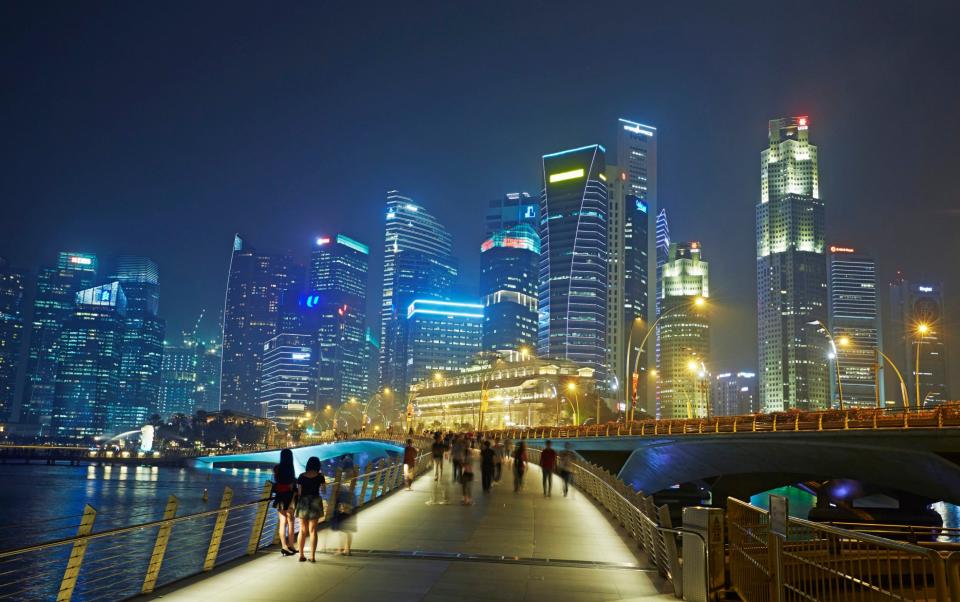Why Singapore is on alert for a record-breaking year of disease

Singapore is on track to face a “massive outbreak” of dengue in 2023, experts have warned, as a booming mosquito population is spreading a strain previously uncommon in the city-state.
The disease – known as ‘breakbone fever’ because of the intense joint and muscle pain it can cause – surged across much of the world in 2022, following two years of suppressed transmission linked to Covid restrictions.
In Singapore, the National Environment Agency said earlier this month that total cases last year were almost six times higher than in 2021 – with 32,000 recorded. But officials warned the trend appears to have seeped into the new year, with almost twice as many infections reported in the week ending January 9 compared to the same period in 2022.
While cases remain well below the 2022 peak – with around 200-300 a week, compared to 1,568 last summer – experts fear it “may presage a large outbreak to come”, as outbreaks tend to peak in the middle of the year.
“The continued high number of dengue cases at the start of the year increases the risk of an early surge in cases in the coming months, and could lead to another dengue outbreak in Singapore this year,” the agency said.

Climate change and rapid urbanisation have fuelled a rise in the disease for decades – it was endemic in just nine countries in the 1970s, but is now common in more than 100 and affects as many as 400 million people a year.
But in Singapore, the recent surge has also been pinned on to two other factors: a jump in the mosquitos that transmit the pathogen, and the arrival of an unusual strain.
“Singapore, which appears on track to break its previous years record of the highest number of cases, is reporting an 24 per cent increase in the densities of Aedes aegypti [which spreads dengue],” said Dr Neelika Malavige, head of the dengue programme at the Drugs for Neglected Diseases initiative. “This is worrying.”
The type of dengue spreading is also not detected widely in the city-state in the last three decades. The virus has four strains – known as DENV 1, 2, 3 and 4 – and an infection with one provides only partial, temporary immunity against the other serotypes.
Subsequent infections with a different strain can even increase the risk of developing severe disease. While the vast majority of cases are relatively mild, about 500,000 people are hospitalised a year after contracting the virus, and 20,000 die.
‘Bad news’ for Asian countries
“Singapore’s current experience is somewhat unique in the region because their population of around 5 million people have no recent experience with the dengue-3 serotype,” said Prof Cameron Simmons, director of the Oceania hub of the World Mosquito Program.
“In other words, a lot of the population are susceptible to being infected and becoming sick with dengue-3.”
Dr Malavige added that a similar problem was seen between 2008 and 2010, when dengue 1 returned to Asia, and again in 2015 when dengue 2 became dominant.
“Due to the large non-immune population, the introduction of a new serotype would drive massive outbreaks,” she said. “If dengue 3 spreads like dengue 1 and 2, it would be bad news for many Asian countries… [and] as seen with Covid-19, viruses rarely remain as a regional issue.”
Already Thailand’s director-general of the Disease Control Department, Dr Tares Krassanairawiwong, has suggested that the country could see three to four times more cases this year, while Malaysian experts have suggested the country is on alert for a bad year.
Several initiatives are underway to attempt to stem transmission in Singapore – where a strong surveillance system means it is possible for the public to see precisely where the 74 clusters of disease currently detected are, down to individual street level.
Dr Alex Cook, an associate professor at the National University of Singapore specialising in infectious disease modelling, said large banners have been rolled out to advertise cases in each neighbourhood, while there are “spot checks” from public health officers to hunt down breeding sites.
Public housing estates also have “gravitraps” – plant pot-sized containers that attract pregnant mosquitoes, to allow scientists to monitor their spread and target the regions where control measures need to be introduced.
On a larger scale, Singapore is taking part in the Wolbachia programme – where mosquitoes are infected with the bacteria, which competes with dengue and makes it harder for the virus to replicate and cause infections.
The city-state repeatedly releases male infected insects to suppress the total population, as Wolbachia in male mosquitoes stops them producing viable offspring when they mate.
“This is currently being scaled up, but the areas [where it has been rolled out] see very few dengue clusters,” said Dr Cook. “Personally, I see great hope in this technology for dengue control in cities like Singapore where entire neighbourhoods can be blanketed in this way.”
Protect yourself and your family by learning more about Global Health Security

 Yahoo Movies
Yahoo Movies 